The wildlife biology core curriculum provides foundational knowledge in biology, ecology, and conservation, preparing students for careers in wildlife management and research.
1.1 Overview of Wildlife Biology as a Field of Study
Wildlife biology is an interdisciplinary field focused on understanding the ecology, behavior, and conservation of wild animals. It integrates principles from zoology, botany, ecology, and genetics to study interactions between species and their environments. The field emphasizes the importance of biodiversity, habitat management, and sustainable practices to ensure the survival of wildlife populations. By combining scientific research with practical applications, wildlife biology addresses critical issues like endangered species, climate change, and human-wildlife conflicts. This foundation prepares students to contribute to conservation efforts and develop effective strategies for managing ecosystems in a rapidly changing world.
1.2 Importance of a Core Curriculum in Wildlife Biology
A core curriculum in wildlife biology ensures students gain a comprehensive understanding of fundamental principles and methodologies. It provides a structured approach to learning, covering essential topics like ecology, genetics, and conservation biology. This foundation equips students with the necessary skills to analyze complex environmental issues and develop effective solutions. A standardized curriculum also facilitates collaboration among institutions and ensures consistency in preparing graduates for professional roles. By emphasizing both theoretical knowledge and practical applications, the core curriculum prepares students to address real-world challenges in wildlife conservation and management, fostering a workforce capable of meeting global environmental demands.

Core Courses in Wildlife Biology
Core courses include foundational biology, ecology, genetics, conservation practices, and research methods, providing a comprehensive understanding of wildlife biology principles and practical applications.
2.1 Foundational Biology Courses
Foundational biology courses form the backbone of the wildlife biology curriculum, introducing students to essential concepts in cell biology, genetics, evolution, and organismal biology. These courses provide a rigorous understanding of biological principles, including molecular mechanisms, ecological interactions, and evolutionary processes. Key subjects include introductory biology, genetics, and evolutionary biology, ensuring students develop a strong scientific foundation. Additionally, courses in botany, zoology, and ecology are often included to broaden understanding of diverse life forms and their environments. These foundational courses are typically completed in the early stages of the program and are prerequisite for more specialized wildlife biology courses. They total approximately 20-25 credits.
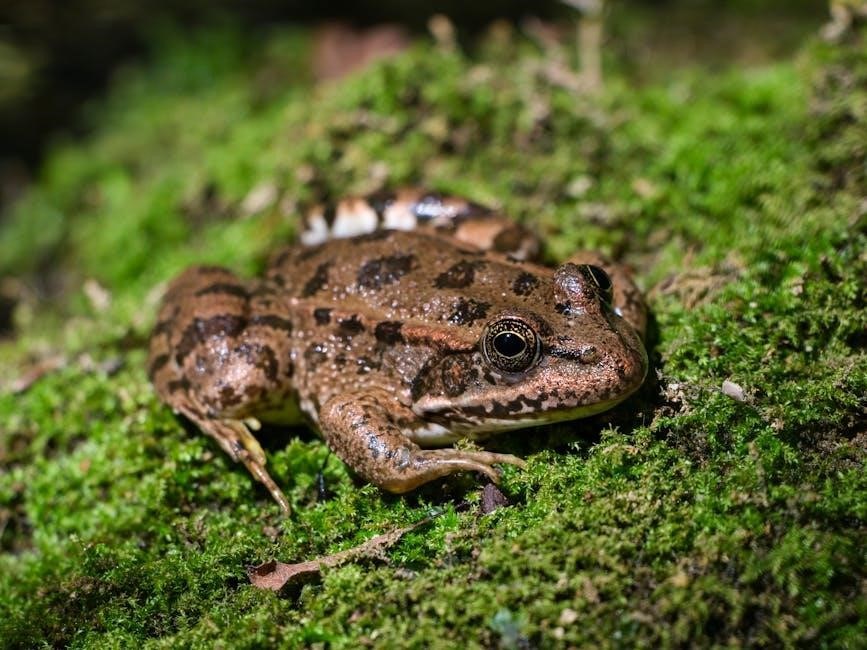
2.2 Ecology and Evolutionary Biology
Ecology and evolutionary biology courses explore the interactions between organisms and their environments, as well as the processes driving species adaptation and diversity. These courses emphasize principles of population dynamics, community ecology, and ecosystem functioning, while also examining evolutionary mechanisms shaping life forms. Students learn to analyze ecological data, understand species interactions, and apply theoretical knowledge to real-world conservation challenges. Evolutionary biology provides insights into the history and diversity of life, crucial for managing wildlife populations and ecosystems sustainably. These courses typically include labs and fieldwork, enabling students to apply ecological and evolutionary concepts to practical scenarios in wildlife conservation and management.
2.3 Genetics and Conservation Biology
Genetics and conservation biology courses focus on understanding genetic diversity, phylogenetic relationships, and molecular techniques essential for wildlife conservation. Students learn how genetic principles apply to population management, species identification, and disease resistance. These courses emphasize the importance of genetic diversity in maintaining healthy ecosystems and address challenges like inbreeding depression and habitat fragmentation. Practical applications include genetic sampling, population genetics analysis, and the use of molecular markers in conservation planning. This knowledge is critical for developing effective strategies to preserve threatened and endangered species, ensuring their survival in changing environments while maintaining ecological balance and biodiversity.
2.4 Wildlife Management and Conservation Practices
Wildlife management and conservation practices are central to the curriculum, focusing on the application of scientific principles to maintain healthy wildlife populations and ecosystems. Courses cover habitat management, population dynamics, and techniques for data collection and analysis. Students learn about regulated hunting, habitat restoration, and human-wildlife conflict mitigation; Practical skills include designing conservation plans, implementing monitoring programs, and applying environmental policies. These practices emphasize sustainable management of natural resources and the balance between human needs and wildlife preservation. By integrating ecology, biology, and policy, this training prepares professionals to address complex conservation challenges effectively, ensuring biodiversity and ecosystem health for future generations.
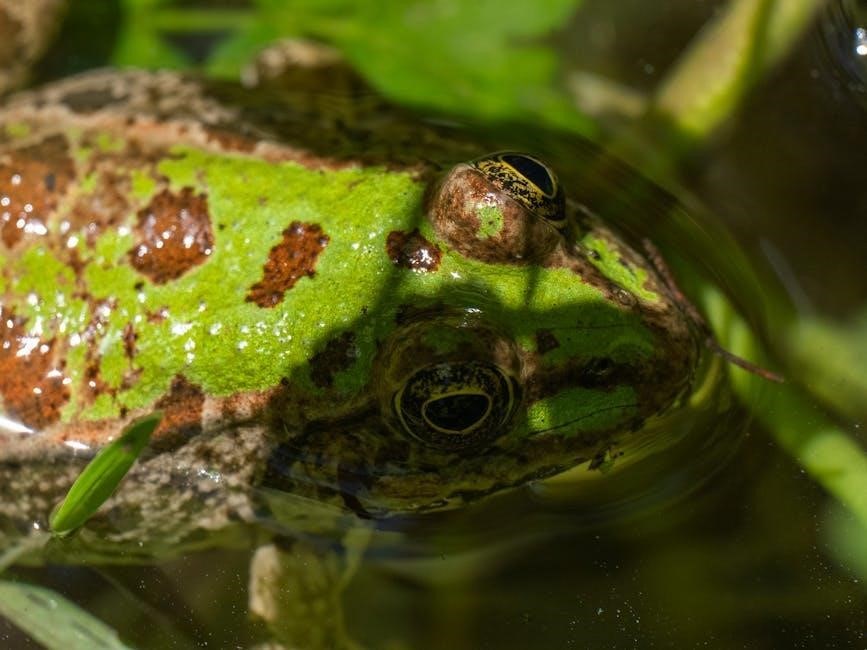
2.5 Research Methods in Wildlife Biology
Research methods in wildlife biology emphasize the development of practical and analytical skills to study wildlife populations and ecosystems. Courses cover field techniques such as observations, camera traps, and mark-recapture methods, as well as laboratory procedures like genetic analysis and necropsies. Students learn to design experiments, collect and analyze data, and interpret results to inform conservation and management decisions. Key tools include geographic information systems (GIS), remote sensing, and statistical software for data processing. These methods enable wildlife biologists to address questions about population dynamics, habitat use, and species interactions, ensuring evidence-based approaches to wildlife conservation and sustainable resource management.
Specializations Within Wildlife Biology
Specializations include wildlife ecology, endangered species management, habitat restoration, and wildlife-human conflict mitigation, offering focused training for addressing specific conservation challenges and ecological issues effectively.
3.1 Wildlife Ecology and Behavior

Wildlife ecology and behavior focus on understanding the interactions between animals and their environments, including habitat use, population dynamics, and behavioral patterns. This specialization delves into the ecological principles governing wildlife populations, such as foraging strategies, predator-prey relationships, and migration behaviors. Students explore how environmental factors, including climate and human activities, influence animal behavior and ecological balance. Courses in this area often include field observations, ecological modeling, and hands-on research projects to develop practical skills in studying and managing wildlife populations effectively. This specialization prepares students to address complex conservation challenges and promote sustainable coexistence between wildlife and human-dominated landscapes.
3.2 Endangered Species Management
Endangered species management focuses on strategies to conserve and recover threatened and endangered populations. This specialization emphasizes the development of conservation plans, habitat restoration, and population monitoring. Students learn about legal frameworks like the Endangered Species Act and international agreements. They also explore genetic diversity, captive breeding programs, and reintroduction techniques. Courses often include case studies of successful recovery efforts and the challenges of balancing human activities with species preservation. This area prepares graduates to work with government agencies, NGOs, and research institutions to design and implement effective conservation strategies for at-risk species and ecosystems.
3.3 Habitat Restoration and Management
Habitat restoration and management focuses on restoring degraded ecosystems and managing habitats to support biodiversity. This specialization teaches students to assess ecological conditions, design restoration plans, and implement strategies to rehabilitate damaged landscapes. Courses cover techniques such as reforestation, wetland reconstruction, and invasive species control. Students also learn about land-use planning and the integration of human activities with ecological conservation. Practical fieldwork and case studies provide hands-on experience in managing habitats for wildlife. Graduates are prepared to address environmental challenges and promote sustainable ecosystem practices, ensuring healthy habitats for diverse species and ecosystems.
3.4 Wildlife-Human Conflict Mitigation
Wildlife-human conflict mitigation addresses the challenges arising from interactions between wildlife and human activities. This specialization focuses on understanding the causes of conflicts, such as habitat encroachment, resource competition, and human-wildlife interactions. Students learn strategies to minimize these conflicts, including habitat modification, wildlife corridors, and community engagement. Techniques such as camera traps, conflict monitoring, and spatial analysis are explored. The curriculum emphasizes sustainable land-use planning and policy development to reduce human-wildlife conflicts. Graduates gain skills to design and implement effective mitigation plans, fostering coexistence between humans and wildlife while promoting biodiversity conservation and ecosystem health.
Skills and Competencies Developed
Students develop skills in data analysis, field research, and environmental policy, along with lab techniques and problem-solving abilities, fostering critical thinking and effective communication in wildlife biology.
4.1 Data Analysis and Interpretation
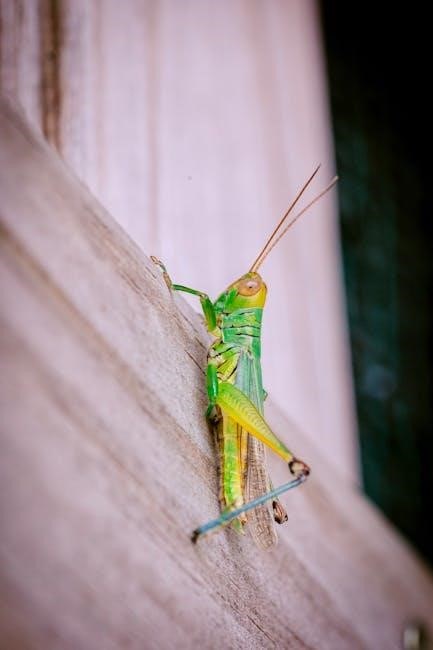
Data analysis and interpretation are critical skills in wildlife biology, enabling students to process ecological data, apply statistical methods, and draw meaningful conclusions. Using tools like R and Python, students learn to analyze population dynamics, habitat use, and species interactions. These skills are essential for understanding complex biological systems and informing conservation strategies. Hands-on experience with data interpretation prepares graduates to address real-world challenges in wildlife management and research, ensuring they can effectively communicate findings to stakeholders. Proficiency in data analysis is a cornerstone of the wildlife biology curriculum, equipping students to make evidence-based decisions in their future careers.

4.2 Field Research and Survey Techniques
Field research and survey techniques are essential skills in wildlife biology, enabling students to collect and analyze data in natural environments. These methods include species monitoring, habitat assessments, and behavioral observations. Students learn to use tools like GPS tracking, camera traps, and acoustic sensors to study wildlife. Hands-on training in survey design, data collection, and field safety prepares graduates for real-world conservation and research challenges. Practical experience in diverse ecosystems enhances understanding of ecological principles and their application in managing wildlife populations. These skills are vital for conducting effective fieldwork and informing evidence-based conservation strategies in wildlife biology careers.
4.3 Environmental Policy and Advocacy
Environmental policy and advocacy are critical components of wildlife biology education, equipping students with the skills to influence conservation efforts and promote sustainable practices. The curriculum covers key environmental laws, policy development, and advocacy strategies. Students learn to analyze and develop policy briefs, engage with stakeholders, and communicate scientific findings to policymakers. This training prepares graduates to navigate complex legal and regulatory frameworks, advocating for wildlife conservation and environmental protection. By bridging science and policy, wildlife biologists can drive meaningful change, ensuring that conservation goals are integrated into broader environmental policies and practices. This skill set is essential for effective advocacy in wildlife biology careers.
4.4 Laboratory and Analytical Methods
Laboratory and analytical methods are essential skills for wildlife biologists, enabling them to conduct precise field and lab-based research. The curriculum includes training in genetic analysis, species identification, and data interpretation using advanced tools. Students learn to collect and analyze biological samples, such as DNA and tissue, to study population dynamics and species health. Laboratory exercises also cover techniques like microscopy, histopathology, and chemical analysis. These skills are vital for understanding ecological processes, diagnosing diseases, and developing conservation strategies. Proficiency in lab methods ensures wildlife biologists can accurately interpret data, informing effective management and research outcomes in diverse conservation contexts.
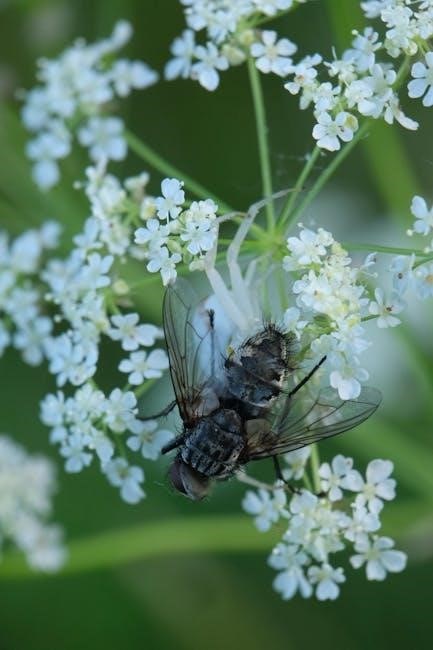
Career Opportunities in Wildlife Biology
Wildlife biology offers diverse careers, including Wildlife Biologist, Conservation Manager, Research Scientist, and Wildlife Technician, utilizing skills in data analysis, field research, and policy advocacy.
5.1 Wildlife Biologist
A Wildlife Biologist studies and manages wildlife populations, habitats, and ecosystems to ensure conservation and sustainability. They conduct field research, analyze data, and develop management strategies to address environmental challenges. Key skills include understanding ecological principles, applying conservation practices, and interpreting biological data. Wildlife Biologists often collaborate with government agencies, NGOs, and communities to implement policies and educate the public. The role requires a strong foundation in biology, ecology, and statistics, as well as hands-on experience with field techniques like species monitoring and habitat assessment. This career path is ideal for those passionate about protecting biodiversity and ensuring the health of wildlife populations for future generations.
5.2 Conservation Manager
A Conservation Manager oversees and implements strategies to protect and restore ecosystems, ensuring sustainable use of natural resources. They develop and manage conservation programs, collaborate with stakeholders, and ensure compliance with environmental policies. Key responsibilities include conducting ecological assessments, supervising field operations, and coordinating with government agencies and local communities. Conservation Managers also secure funding, prepare reports, and advocate for environmental causes. This role requires strong leadership, project management, and communication skills, along with a deep understanding of ecological principles and conservation practices. Many Conservation Managers work in government agencies, NGOs, or private organizations, playing a critical role in safeguarding biodiversity and ecosystem health.
5.3 Research Scientist
A Research Scientist in wildlife biology focuses on conducting scientific studies to understand and address ecological challenges. They design experiments, collect and analyze data, and publish findings to inform conservation efforts. Research Scientists often specialize in areas like population dynamics, habitat ecology, or wildlife genetics. They may work in academia, government agencies, or private organizations, contributing to the development of effective conservation strategies. Their work is essential for advancing knowledge and solving complex environmental issues, ensuring sustainable management of wildlife populations and ecosystems. Strong analytical and research skills are critical for success in this role, which plays a vital part in shaping conservation policies and practices.
5.4 Wildlife Technician
Wildlife Technicians play a crucial role in supporting wildlife biologists and conservation managers by conducting fieldwork, data collection, and habitat assessments. They assist in monitoring wildlife populations, implementing management practices, and ensuring the effective execution of conservation strategies. Their responsibilities often include conducting surveys, handling and tracking animals, and maintaining equipment. Wildlife Technicians work in diverse environments, from forests to wetlands, and require strong observational and technical skills. This role is ideal for individuals passionate about hands-on conservation work, offering opportunities to contribute directly to the protection and sustainability of ecosystems. Their efforts are essential for advancing wildlife conservation goals and maintaining biodiversity.
Curriculum Design and Structure
The curriculum is structured to balance foundational and specialized courses, ensuring a comprehensive understanding of wildlife biology while adapting to emerging trends and technologies in conservation.
6.1 Semester-wise Course Distribution
The curriculum is divided into eight semesters, with a balanced distribution of core and elective courses. The first two years focus on foundational biology, chemistry, and mathematics, while the latter years emphasize specialized wildlife courses, fieldwork, and research. Each semester typically includes 15-18 credits, ensuring a gradual build-up of knowledge and skills. Practical training and internships are integrated into the final years to provide hands-on experience. This structured approach ensures students are well-prepared for both academic and professional challenges in wildlife biology and conservation. The course distribution is designed to align with industry needs and emerging trends in the field.
6.2 Credit Requirements and GPA Standards
The wildlife biology core curriculum requires a minimum of 120 credits for graduation, including 39 upper division credits. Students must maintain a cumulative GPA of 2.5 or higher, with a minimum grade of C (2.0) in all core courses. The program ensures a comprehensive understanding of biological sciences, conservation, and ecological principles. Meeting these academic standards is crucial for progression and graduation, as they reflect the rigor and depth of knowledge required in the field of wildlife biology. Failure to meet GPA requirements may result in academic probation or delayed graduation.
6.3 Elective Courses and Specializations
Elective courses in wildlife biology allow students to tailor their education to specific interests or career goals. Specializations such as Wildlife Ecology, Conservation Biology, or Habitat Management enable deeper exploration of niche areas. These courses provide hands-on experience and advanced knowledge, enhancing professional development. Students can choose from a variety of topics like forest ecology, ornithology, or deer ecology, aligning with their academic and career objectives. Electives also foster critical thinking and practical skills, preparing graduates for specialized roles in wildlife conservation and management. This flexibility ensures a well-rounded education while allowing students to pursue their passions within the field of wildlife biology.
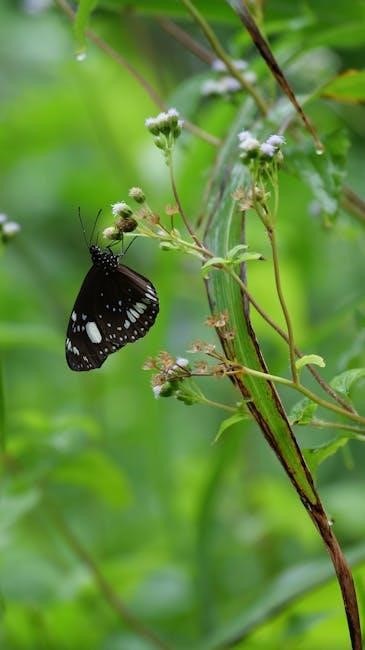
Additional Resources and Tools
Online courses, field guides, and professional networks provide essential resources for wildlife biology students, enhancing learning and staying updated on conservation practices and research advancements.
7;1 Online Courses and Tutorials
Online courses and tutorials offer flexible learning opportunities, enabling students to explore wildlife biology topics in-depth. Platforms like Coursera and edX provide access to expert-led lectures, case studies, and practical exercises. These resources cover foundational subjects such as ecology, genetics, and conservation biology, as well as specialized areas like wildlife management and research methods. Many courses are self-paced, allowing students to balance learning with other commitments. Additionally, tutorials often include interactive elements, such as virtual labs and field simulations, to enhance hands-on understanding. These tools are invaluable for supplementing traditional education and staying updated on emerging trends in wildlife biology.
7.2 Field Guides and Reference Materials
Field guides and reference materials are essential tools for wildlife biologists, providing detailed information on species identification, habitat analysis, and ecological processes. These resources often include taxonomic keys, illustrations, and distribution maps to aid in accurate species recognition. Reference materials such as textbooks, journals, and technical reports offer in-depth insights into conservation practices, research methodologies, and theoretical concepts. Digital versions of these resources are increasingly available, making them more accessible for fieldwork and study. Universities and conservation organizations often recommend specific guides tailored to regional or specialized studies, ensuring students and professionals have reliable information at their fingertips.
7.3 Professional Networks and Organizations
Professional networks and organizations play a vital role in advancing wildlife biology education and careers. Groups like The Wildlife Society and the Society for Conservation Biology provide platforms for networking, resource sharing, and professional development. These organizations often host conferences, workshops, and webinars, offering opportunities to learn from experts and collaborate on conservation efforts. Additionally, they provide access to job boards, mentorship programs, and publications that keep members informed about the latest research and practices. Engaging with these networks enhances career prospects and fosters a sense of community among wildlife biologists, ensuring they remain at the forefront of conservation and scientific advancements.
The wildlife biology core curriculum prepares students to address global conservation challenges, fostering innovation and interdisciplinary approaches in wildlife management and research.
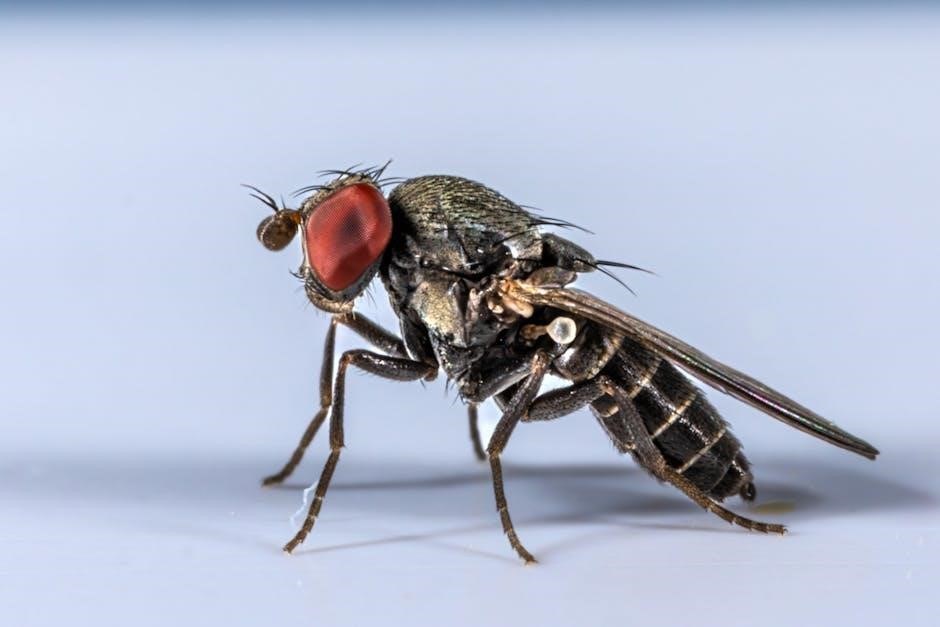
8.1 The Role of Wildlife Biologists in Conservation Efforts
Wildlife biologists play a crucial role in conservation by conducting research, managing habitats, and developing strategies to protect endangered species. They address challenges like climate change, habitat loss, and human-wildlife conflict, ensuring biodiversity preservation. Their work informs policy decisions and community engagement, promoting sustainable coexistence between humans and wildlife. By applying scientific knowledge, wildlife biologists contribute significantly to global conservation efforts, safeguarding ecosystems for future generations.
8.2 Emerging Trends in Wildlife Biology Education
Emerging trends in wildlife biology education emphasize interdisciplinary approaches, integrating technology and hands-on learning. Advanced courses now incorporate genetic analysis, spatial ecology, and climate change impacts. Online platforms and virtual labs enhance accessibility, while field-based programs provide practical experience. Collaborations with conservation organizations expose students to real-world challenges. There is a growing focus on sustainability and human-wildlife conflict mitigation. These innovations ensure wildlife biologists are equipped to address complex ecological issues, fostering a dynamic and adaptive field. Curriculum updates reflect global priorities, preparing students for the evolving demands of conservation and environmental stewardship.